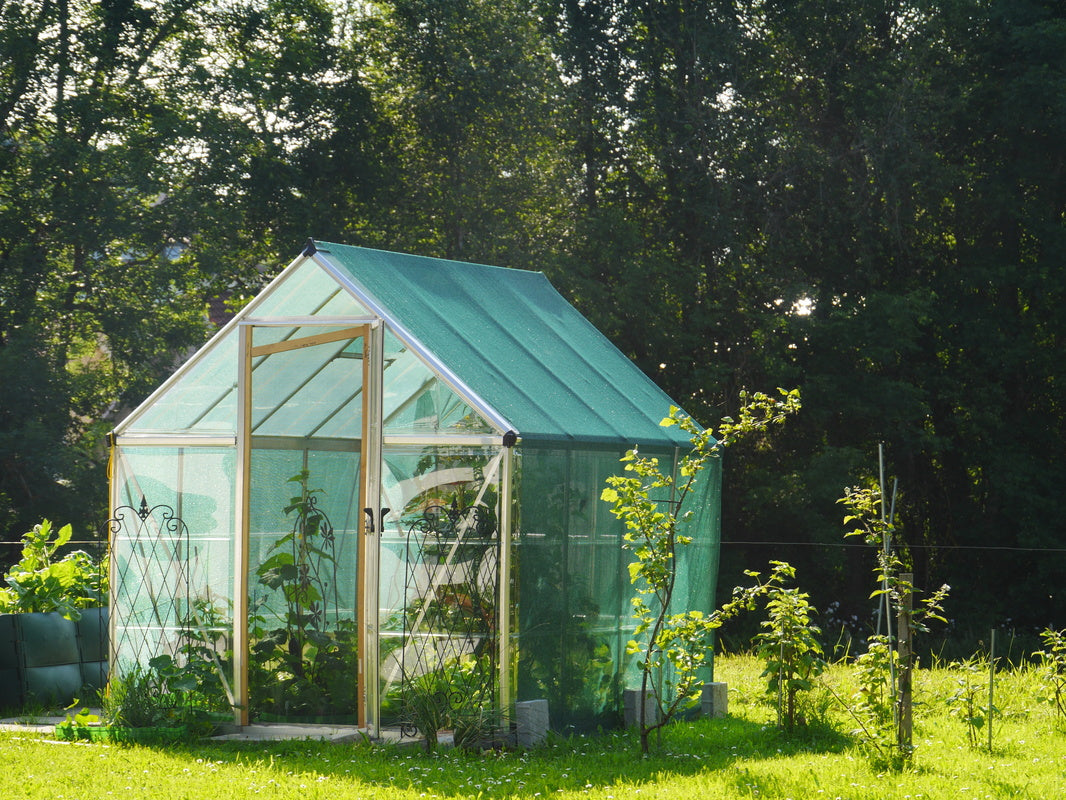1-800-540-905
Info@HomesteadSupplier.com
7am-4pm Pacific Time Mon-Fri
1-800-540-9051
Info@HomesteadSupplier.com
7am-4pm Pacific Time Mon-Fri
1-800-540-905
Info@HomesteadSupplier.com
7am-4pm Pacific Time Mon-Fri
1-800-540-9051
Info@HomesteadSupplier.com
7am-4pm Pacific Time Mon-Fri

The difference between a hothouse vs a greenhouse comes down to temperature control, energy use, and plant suitability.
A hothouse is a heated structure designed to maintain consistently high temperatures and humidity for tropical plants, while a greenhouse relies on sunlight and insulation to create a controlled environment for a wide range of plants.
Hothouses require more energy and are ideal for exotic species, whereas greenhouses are more versatile and efficient for year-round gardening. In this article, we'll break down the key differences, explore whether a greenhouse can also function as a hothouse, and help you decide which option is best for your needs.
What this article covers:
A hothouse is a heated greenhouse designed to maintain consistently high temperatures, typically above 65°F (18°C), to create an ideal environment for tropical and exotic plants.
Key features include:
From our experience, hothouses are best suited for gardeners who love tropical plants or live in colder climates but still want to grow warmth-dependent species. However, they do come with higher operating costs due to the additional heating and humidity control systems.
A greenhouse is a structure made of a variety of materials such as polyethylene vs polycarbonate greenhouses or plastic vs glass greenhouses that trap and retain heat from sunlight to create a controlled growing environment for plants.
Unlike a hothouse, a standard greenhouse isn't necessarily heated year-round—it relies more on solar energy to warm the air inside.
Key features include:
You also get different types of greenhouses or greenhouse-adjacent structures, such as a cold frame vs greenhouse or a high tunnel vs greenhouse.
According to our research, greenhouses are extremely versatile and allow gardeners to extend the growing season in cooler climates without relying heavily on artificial heating.
Both structures create a controlled environment for plant growth, but they serve different purposes. Understanding their differences can help you decide which one suits your gardening goals best:
The biggest difference between a hothouse and a greenhouse is how they maintain temperature. A hothouse relies on artificial heating to keep the internal temperature consistently high, usually above 65°F (18°C).
This makes it perfect for tropical plants that require warmth year-round. A greenhouse, on the other hand, primarily uses passive solar heating. The sun warms the air inside, and insulation helps retain that heat. In colder climates, additional heating can be added, but many greenhouses can function without it for most of the year.
Because a hothouse requires constant heating and humidity control, it naturally consumes more energy. This leads to higher operating costs, especially in colder regions where outdoor temperatures drop significantly.
A greenhouse, however, is more energy-efficient. It harnesses sunlight to create a warm environment and, depending on the season, may not need any additional heating at all. This makes it a more budget-friendly and sustainable option for many gardeners.

The type of plants you want to grow plays a big role in choosing between a hothouse and a greenhouse. A hothouse is designed for tropical and subtropical plants that thrive in high heat and humidity. Orchids, ferns, and bromeliads are great examples.
A greenhouse, however, is more versatile. It can accommodate a wide range of plants, including vegetables, herbs, flowers, and seasonal crops. If you want flexibility in what you grow throughout the year, a greenhouse is the better choice.
A hothouse is a specialized growing space meant for a specific type of plant. It's excellent for tropical species but isn't as adaptable for other growing needs. A greenhouse, on the other hand, offers much more flexibility.
You can modify the internal conditions with ventilation, shading, or heating, allowing you to grow different plants in different seasons. This makes greenhouses a great long-term investment for gardeners who like to experiment or change their crops throughout the year.
Yes! You can convert a greenhouse such as our Riverstone Industries Monticello Black Greenhouse into a hothouse by adding heating systems and humidity controls.
From our experience, many gardeners start with a greenhouse and later decide to modify it into a hothouse once they get more specialized in their growing needs. That being said, this works best with more permanent structures. When it comes to a hoop house vs a greenhouse, a proper greenhouse is best.
If you want flexibility, a greenhouse gives you the best of both worlds—you can keep it as a standard greenhouse or heat it up to mimic a hothouse when needed.
The best choice between a greenhouse and a hothouse depends on factors like climate, plant selection, budget, and long-term goals. If you live in a colder region and want to grow tropical plants, a hothouse is necessary to maintain the warm, humid conditions they require.
However, if you're looking for a more versatile growing space that can accommodate a variety of crops throughout the year, a greenhouse is the more practical option. It relies on natural sunlight and passive heating, making it far more energy-efficient and cost-effective to operate than a hothouse, which requires constant heating.
Greenhouses also offer greater flexibility, allowing you to adjust ventilation, shading, and heating systems over time to suit different plants. From our experience, a greenhouse is the better choice for most gardeners since it provides more growing options, requires less energy, and delivers better long-term value.
Both hothouses and greenhouses provide controlled environments for plant growth, but they serve different purposes.
For most gardeners, a greenhouse is the smarter investment, providing a cost-effective way to extend the growing season and support diverse plant life. If you're ready to start building the perfect greenhouse for your needs, explore our high-quality greenhouse kits at Homestead Supplier today!
Did our blog meet your needs? You might also find our other guides helpful:
Compare products
{"one"=>"Select 2 or 3 items to compare", "other"=>"{{ count }} of 3 items selected"}
Leave a comment